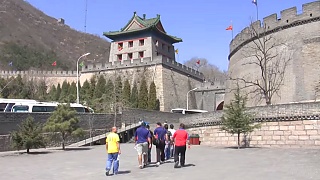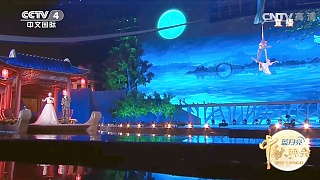
|
With 4K World Wanderings ...
1. *Pingjiang Road:* A historic street lined with traditional buildings, teahouses, and shops, offering a glimpse into the ancient lifestyle of Suzhou.
2. *Humble Administrator's Garden (Zhuo Zheng Yuan):* One of the most famous classical gardens in China, known for its beautiful ponds, rock formations, and traditional pavilions.
3. *Lingering Garden (Liu Yuan):* Another UNESCO World Heritage site, featuring exquisite landscaping, intricate architecture, and serene water features.
4. *Master of the Nets Garden (Wangshi Yuan):* A smaller yet beautifully designed garden, showcasing classical Chinese garden aesthetics.
5. *Suzhou Museum:* Designed by the renowned architect I.M. Pei, this museum houses a vast collection of ancient Chinese art, ceramics, and cultural artifacts.
6. *Tiger Hill (Hu Qiu):* A historic site with a leaning pagoda, ancient tombs, and beautiful landscapes, offering panoramic views of Suzhou.
7. *Shantang Street:* An ancient canal street bustling with traditional shops, restaurants, and cultural performances.
8. *Suzhou Silk Museum:* A museum dedicated to the history and art of silk production, showcasing exquisite silk garments and weaving techniques.
9. *Pan Gate (Pan Men):* A historic city gate and water gate, part of Suzhou's ancient city wall, featuring beautiful gardens and waterways.
10. *Lion Grove Garden (Shizilin):* Known for its labyrinthine rock formations, this garden is a masterpiece of Chinese landscaping.
11. *Hanshan Temple:* An ancient Buddhist temple with a famous bell, immortalized in classical Chinese poetry.
12. *Suzhou Industrial Park:* A modern district showcasing the blend of traditional and contemporary architecture, with beautiful water features and green spaces.
13. *Ancient Canal:* A boat ride along the ancient canal offers a scenic and relaxing way to explore Suzhou's water town charm.
14. *Twin Pagodas:* Historical pagodas that are an iconic symbol of Suzhou, offering insights into the city's religious and architectural history.
15. *Canglang Pavilion (Surging Wave Pavilion):* The oldest garden in Suzhou, known for its elegant design and tranquil ambiance.
16. *Pingjiang Historic District:* A well-preserved area with narrow lanes, traditional houses, and waterways, perfect for a leisurely stroll.
17. *Tongli Water Town:* A nearby ancient water town, famous for its well-preserved architecture, stone bridges, and tranquil canals.
18. *Wumen Bridge:* An ancient stone bridge offering picturesque views of the canals and traditional Suzhou architecture.
19. *Suzhou Pingtan Museum:* A museum dedicated to the traditional Suzhou performing art of Pingtan, featuring music, storytelling, and opera.
20. *Beisi Pagoda:* A historic pagoda offering stunning views of Suzhou and its surrounding landscapes.
|

 Beautiful Shangri-La 香格里拉
Beautiful Shangri-La 香格里拉




